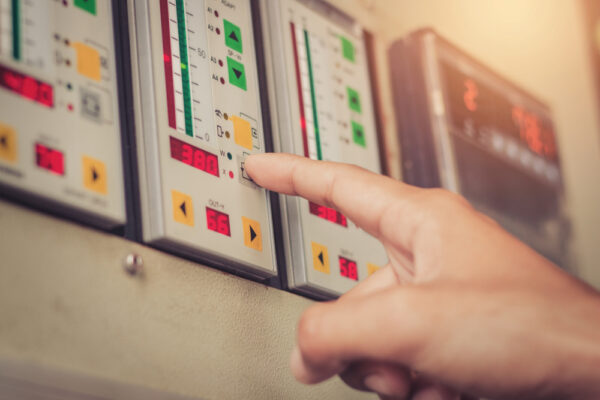How To Troubleshoot Faults in Industrial AC Drives

The consequences of an AC drive failure can be costly and frustrating. After all, they’re responsible for controlling motor speed and torque in critical applications, and a single malfunctioning AC drive can bring production to a grinding halt. Here’s how you can tackle AC drive faults head-on — before they become a problem — to keep operations running smoothly.
Why do AC drives fail?
AC drives are complex systems that can experience a wide array of issues. Generally, a fault occurs when the drive detects an abnormal condition that could damage it or the connected equipment. Some common faults include:
- Overcurrent fault: Excessive current due to load increases or wiring issues
- Overvoltage fault: High DC bus voltage from power supply problems
- Undervoltage fault: Low DC bus voltage caused by weak power supply or grid issues
- Overtemperature fault: Poor cooling or high ambient temperature
- Ground fault: Short between motor phase and ground (often from damaged wiring)
If a fault is detected, the drive typically shuts down to protect itself and the motor. By familiarizing yourself with these frequent culprits, you’ll be better prepared to diagnose and resolve issues quickly. Thankfully, most modern AC drives have built-in diagnostic features that display fault codes, making the troubleshooting process more straightforward.

Systematic troubleshooting
A faulty AC drive might make an eager tech jump straight into problem-solving mode, but a haphazard approach can lead to misdiagnosis, wasted time, and even further damage to the system. A systematic troubleshooting methodology is the way to go:
- Observe and record the fault code and operating conditions. Fault codes provide key insights into the issue, like overcurrent or undervoltage. Note the code and operating conditions (motor load, voltage, environment) to identify patterns in intermittent faults.
- Consult the drive’s manual for fault code meaning and remedies. Each drive model has specific fault codes with corresponding remedies. Manuals guide you on resetting, adjusting parameters, or performing hardware checks. Follow the instructions closely to avoid escalating issues.
- Check for environmental issues like temperature or interference. AC drives are sensitive to temperature, humidity, and EMI. Ensure the drive is within its operating range, has proper ventilation, and is free from EMI by checking grounding and shielding.
- Inspect all power and control wiring connections. Loose or damaged wiring often causes drive failures. Check input/output terminals, motor leads, and control wiring for corrosion, loose connections, or grounding issues.
- Consider recent system modifications or parameter changes. Sudden failures can be linked to recent modifications or parameter changes. Inspect any new motors, control systems, or drive setting adjustments that could cause faults.
- Test individual components to isolate the problem if necessary. If the issue persists, test components like motors, transistors, or cooling fans to isolate the fault. Use multimeters and insulation testers to check for damaged parts.
- Verify drive parameters are set correctly for the application. Parameters such as motor-rated current, voltage, and frequency must align with the specifications of the connected motor and load. Double-check key drive settings, including motor type, rated voltage, current limits, and acceleration profiles, to ensure they are appropriate for the system.
- Clear the fault and restart the drive after addressing the likely cause. After fixing the fault, reset the drive and restart. Monitor for recurring issues, as residual or deeper problems might require further investigation.
- Monitor the system and document troubleshooting steps taken. Once the drive is operational again, continuous monitoring helps ensure that the fault is resolved and doesn’t recur. Log all fault codes, diagnostic steps, and remedies applied during the troubleshooting process. If the drive is part of a larger networked system, consider using remote monitoring tools to track performance and catch early signs of potential future issues.
This structured process helps resolve the immediate issue while building a deeper understanding of an AC drive, which can be invaluable for future maintenance. If drive faults become persistent, techs will know what to look for in both remedying the fault and protecting the drive (and the equipment) as a whole.
Don’t forget! This October, GES is offering a special on all drive repairs. Get 10% off any single drive repair and up to 15% off repairs on three or more items. We’re here to make sure your equipment is ready for peak performance.

Act fast — before faults lead to failures
Troubleshooting faults in AC drives requires a prescriptive approach and technical knowledge in equal parts. With practice and persistence, you’ll become adept at identifying and resolving AC drive faults — and preventing the pervasive problems associated with failures.
